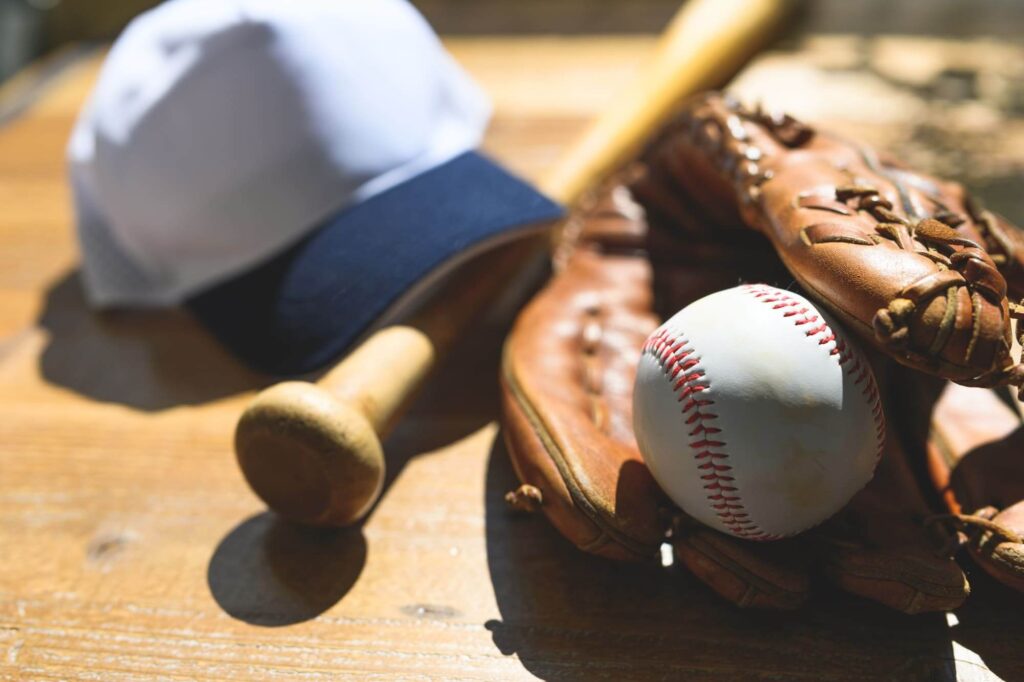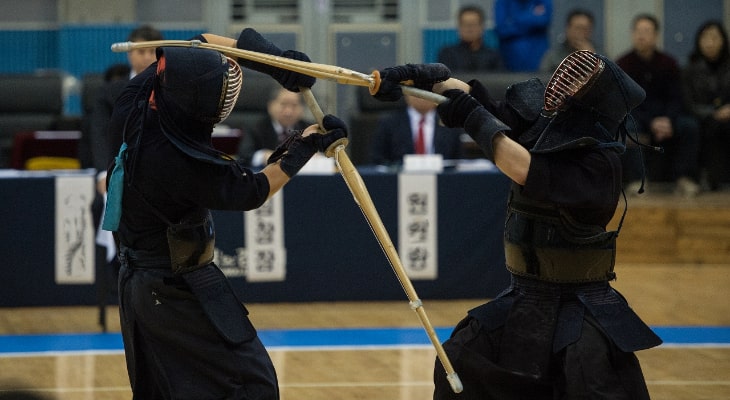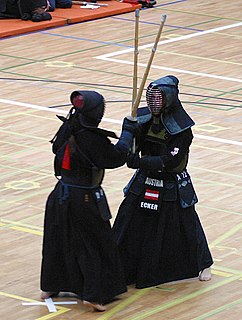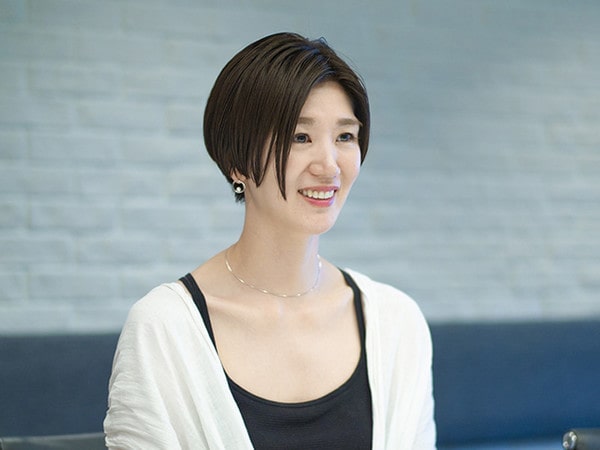
In Kendo training, “suriashi” is one of the basics, but it is also one of the major challenges that many swordsmen face.
In particular, the problem of the “suriashi” not sliding as expected is often a barrier to practice for beginners to intermediate swordsmen.
However, overcoming this problem is a very important step in improving Kendo techniques.
This is because smooth “suriashi” is the basis for quick movements, accurate strikes, and solid defense.
In this article, we will focus on the problem of “suriashi” not slipping in Kendo, and thoroughly explain the causes and solutions.
We will approach this problem from every angle, starting with basic posture, effective practice methods, drills to sharpen the sensation of the soles of your feet, and even items that will enhance the effectiveness of your practice.
Learn the secret to making kendo slip and improve your technique. We hope that through this guide, your Kendo life will be even more fulfilling.
目次
- 1 Introduction: Trouble with non-slip feet
- 2 What is the main reason why “suriashi” does not slip?
- 3 Let’s review the basics: Correct “suriashi” posture
- 4 An effective practice method to make your feet slip
- 5 Train the sensation of the soles of your feet: Drills to grasp the sensation of “slip feet”
- 6 “Suriashi” practice that can be done outside the dojo
- 7 Props and goods to improve the slippage of “suriashi”
- 8 Frequently Asked Questions: What to do when your feet don’t slip
- 8.1 Q1: What is the main reason why the “suriashi” does not slip?
- 8.2 Q2: What are some ways to practice “slip feet” on slippery floors?
- 8.3 Q3: Is there anything I should be careful about in my daily life to avoid “slip feet”?
- 8.4 Q4: My “slip feet” sometimes slip too much during practice, what should I do?
- 9 Summary: Master “suriashi” with daily practice
Introduction: Trouble with non-slip feet
When learning Kendo, the technique of “suriashi” is extremely basic, yet it is said to be extremely difficult to master.
Many swordsmen face the problem of not slipping their feet, which is directly linked to effective strikes, defense, and speed of movement, so mastering this technique is essential to improving in kendo.
So, why doesn’t the “suri-ashi” slip? Here we will explain the common causes.
Why don’t the “slip feet” slip?
-
Posture issues :
- Incorrect posture is one of the main reasons for slipping. In particular, if your weight is unevenly distributed or your upper body swings back and forth, your feet won’t be able to grip the floor firmly, making it difficult to slip.
-
How to move your feet :
- Movements that raise your feet too high or take your feet too far off the floor will prevent you from slipping. Since suriashi is a technique of sliding the soles of your feet close to the floor, you can expect a big improvement just by changing the way you move your feet.
-
Floor condition :
- The practice environment can also be a contributing factor to not slipping. The slipperiness of suriashi changes greatly depending on the texture of the floor, the humidity, and the material of the kendo uniform and tabi socks used.
-
Skill level :
- It may simply be that you have not yet fully mastered the technique of suriashi. Gripping is a technique that requires delicate weight shifting and foot movement, so it must be gradually improved through repeated practice.
Understanding these causes and examining the reasons why your feet don’t slip one by one is the first step to improving your technique.
In the next section, we will explain in detail specific exercises and tips for solving these problems.

What is the main reason why “suriashi” does not slip?
The problem of not being able to slide the “suriashi” is a common barrier that many swordsmen face when aiming to improve their kendo techniques.
There are multiple causes of this problem, and understanding and addressing each is the key to improving the technology.
The main causes are explained in detail below.
foot shape
- You may not be able to slide your feet due to the shape of your feet . This is especially true if your toes aren’t in good contact with the floor or your arches aren’t functioning properly. Choosing tabi socks that match the shape of your feet and training to strengthen the muscles on the soles of your feet are effective.
How to put your weight on
- Inappropriate way of applying weight is also one of the reasons why “suriashi” does not slip. If your weight is biased to one foot or unequal from front to back, your feet will not be in even contact with the floor, making it difficult to slip. It is important to distribute your weight evenly and maintain a low, stable center of gravity.
floor condition
- The condition of the floor also greatly affects how slippery it is. If the floor is damp or made of certain materials, it may become less slippery. Additionally, the floor of a dojo that has been used for many years can become slippery, so it is necessary to adjust the practice environment accordingly.
Skill level
- The influence of the level of technical proficiency cannot be overlooked. If you have not mastered the technique of “sliding” properly, you may apply too much force unnecessarily or the movement may become unstable, making it difficult to slip. It is necessary to learn the correct technique and practice continuously until it becomes ingrained in your body.
Based on these causes, you can overcome the problem of not slipping and improve your technique by identifying the reason why your feet do not slip and adopting a practice method that corresponds to that.
In the next section, we’ll go into more detail about specific practices for dealing with these problems.

Let’s review the basics: Correct “suriashi” posture
“Suriashi” in Kendo is not just about sliding your feet; proper posture is extremely important.
“Suriashi” with the correct posture builds the foundation for efficient movement and stable technique.
Here, we will explain in detail how to practice “suriashi” with the correct posture.
What is the correct “suriashi” posture?
-
Low center of gravity :
- When performing “suriashi”, it is important to keep the center of gravity low. By bending your knees slightly and leaning your body slightly forward, you will stabilize your center of gravity and make it easier to slide.
-
Foot position :
- Spread your feet at shoulder width or slightly narrower. Place the front legs in a straight line and the back legs at a slight angle to allow for flexible movement in both directions.
-
Waist position :
- Correct your posture by lowering your hips and straightening your back. If your hips are too high, you will easily lose your balance and your feet will slip more easily.
How to practice with correct posture
-
Check posture :
- Stand in front of a mirror and consciously assume the posture above. Check the height of your hips, the position of your feet, and the lowness of your center of gravity to confirm that you have the correct posture.
-
Perform “suriashi” slowly :
- At first, do not try to be fast, but practice maintaining the correct posture while doing “suriashi” slowly. In particular, pay attention to the stability of your center of gravity and the position of your hips, and be conscious of not shaking your body back and forth.
-
Increase speed gradually :
- Once your posture is stable, gradually increase the speed of your “suriashi”. At this time as well, practice while being careful to make sure your posture is not disturbed.
-
Check during video shooting :
- It is also effective to record a video of your own “sliding” movement and check it later. We will check in detail whether your posture is distorted during movement, whether your center of gravity is moving appropriately, etc.
Acquiring the correct “Suriashi” posture is the basis for improving Kendo techniques.
Through daily practice, master “suriashi” with the correct posture and take it as a step toward more advanced techniques.

An effective practice method to make your feet slip
In Kendo, smooth and fast “suriashi” are essential for improving technique and increasing your competitive advantage.
Here, we will introduce practical practice methods and key points for effectively sliding “suriashi”.
practice of feeling the ground
- Practice method : This is a “suriashi” exercise performed barefoot. By going barefoot, you can more sensitively sense the contact between the soles of your feet and the ground.
- Tip : Slide back and forth, keeping in mind the feeling of keeping the entire sole of your foot firmly in contact with the floor. Throughout this exercise, it is important to feel the subtle contact between your feet and the ground.
Practice moving the center of gravity
- Practice method : Step by step, consciously shift your center of gravity as you perform “Suriashi”.
- Tip : After shifting your center of gravity to your front foot, immediately repeat the action of sliding your back foot forward. At this time, try to move your center of gravity and move your legs at the same time.
Long-distance “suriashi” practice
- Practice method : Move from one end of the dojo to the other using only “suriashi”.
- Tip : Start slowly, focusing on accuracy, and gradually increase the speed. By skating long distances, we aim to maintain a sustained “slide” and improve stamina.
short intensive practice
- Practice : “Slide” over short distances as quickly as possible.
- Tip : Even for short distances, be conscious of skating at maximum speed without losing your posture. By demonstrating explosive power, you will train your speed and glide over short distances.
practice with a partner
- How to practice : Face your partner and move while keeping a distance from each other.
- Point : By adjusting your “slipping feet” according to the opponent’s movements, you aim to improve your slipperiness and speed when playing against people. By skating while anticipating your opponent’s movements, you will develop a feeling similar to that of a real battle.
These practice methods are effective for cultivating the basic techniques for sliding “suriashi” as well as increasing the ability to apply them in actual combat.
With repeated practice, you will naturally acquire the smoothness and speed of “suriashi”, which will have a positive impact on your overall kendo technique.

Train the sensation of the soles of your feet: Drills to grasp the sensation of “slip feet”
When performing “suriashi” in kendo, it is extremely important to sharpen the senses in the soles of your feet.
By training your senses in the soles of your feet, you will be able to feel minute changes in contact and pressure with the floor, allowing you to achieve a smoother and more accurate “gripping”.
Below, we will introduce specific exercises to train the sensation in the soles of your feet.
Sensation exercises for the soles of your feet using a balance ball
- Practice method : Practice rolling a balance ball or small rubber ball under the soles of your feet.
- Tip : By controlling the ball using the entire sole of your foot, you can train your senses in the sole of your foot in detail. This exercise will help activate the muscles in the soles of your feet and increase sensory acuity.
Walking on sandy beaches and grassy areas
- How to practice : If possible, walk barefoot on surfaces with different textures, such as sand or grass.
- Tip : Walking on uneven ground stimulates different parts of the soles of your feet, sharpening your senses. This exercise, which takes advantage of natural terrain, enriches the sensation of the soles of your feet and makes them more sensitive.
foot massage
- How to practice : Massage the soles of your feet yourself or use a special massage tool.
- Tip : Massaging the soles of your feet will stimulate blood circulation and sharpen your senses. Especially if you do it after a long workout, you can expect it to be effective in relaxing the tired muscles of the soles of your feet and restoring your senses.
Practice changing the speed of “suriashi”
- Practice method : Practice “suriashi” at different speeds and feel the difference in sensation with the soles of your feet.
- Tip : Gradually change the speed from slow “suriashi” to fast “suriashi” to make the soles of your feet more sensitive. The key is to feel the difference in the pressure applied to the soles of your feet as the speed changes.
Through these exercises, train your senses in the soles of your feet and improve your “suriashi” techniques in kendo.
By sharpening the senses in the soles of your feet, you will be able to achieve more precise “suriashi” and improve your overall Kendo performance.

“Suriashi” practice that can be done outside the dojo
Kendo’s “suriashi” practice is not limited to just practicing at the dojo.
There are ways to effectively practice “suriashi” and hone your technique at home or elsewhere.
Below, we will introduce a “suriashi” practice method that can be practiced outside of the dojo.
Anti-slip practice on carpets and tatami mats
- Practice method : Practice “suriashi” on a non-slip carpet or tatami mat.
- Tip : By practicing on a non-slip material, you can be more conscious of how to apply pressure to the soles of your feet and how to shift your weight. This exercise can also be expected to be effective in training the leg muscles necessary for “suriashi”.
Sliding practice using socks
- Practice method : Practice “suriashi” on a smooth floor indoors wearing socks.
- Tip : Wearing socks reduces friction with the floor and makes it easier to slip. This will make it easier for you to acquire the sensation of smooth “sliding feet” and help you realize the importance of shifting your weight and maintaining correct posture.
Exercises using balance boards and balance discs
- Practice method : Train your sense of balance by standing on one leg on a balance board or balance disc.
- Point : Although this exercise does not involve directly performing “suriashi”, it sharpens the sense of the soles of the feet and helps develop the sense of balance required in kendo. “Suriashi” in a stable position requires excellent balance ability.
Image training through video viewing
- How to practice : Watch videos of kendo matches and practices and observe the “suriashi” movements of professional athletes.
- Tip : While watching the video, practice imagining yourself performing the movements. By imagining “sliding feet” while imagining the actual movement, you can improve your technique.
Through these practice methods, you can continue to hone your “suriashi” skills even in your daily life.
The key to improving in kendo is to concentrate and practice daily, just as you would at the dojo.

Props and goods to improve the slippage of “suriashi”
Daily practice is essential to improving your kendo “suriashi” technique, but there are some props and goods that can help make the practice even more effective.
Here, we will introduce recommended items to improve the sliding of kendo’s “suriashi”.
Tabi
- Features : Tabi socks designed specifically for Kendo are made of a material that sharpens the sensation of the soles of your feet and allows you to adjust the slipperiness. It also protects and supports your feet, so you can practice with confidence.
balance disc
- Features : Balance discs that can train your sense of balance strengthen the muscles of the soles of your feet and help increase your sense of stability during “suriashi” in kendo. Ideal for home training, daily use can improve foot control.
anti-slip spray
- Features : A spray that can be used on the floor or the surface of tabi socks to create a moderate amount of friction and control the slippage of feet. This is especially useful when practicing in a new dojo or on slippery flooring, allowing you to adjust the level of slipperiness you desire.
massage tools
- Features : A specialized tool for foot massage, helps to loosen tired sole muscles and promote blood circulation. By using it for post-practice care, you can maintain the feeling in the soles of your feet and refresh your feet for the next practice.
slide board
- Features : A training tool that makes it easier to reproduce the “sliding foot” motion indoors. Practicing on a slide board provides a different sensation than actually “sliding feet,” but it is effective in training the propulsion force of the legs and sense of balance.
By making good use of these props and goods, you will not only improve your “suriashi” technique, but will also help you maintain motivation during practice.
Choose items that match your practice style and desired skill level, and incorporate them into your practice effectively.

Frequently Asked Questions: What to do when your feet don’t slip
In the process of learning Kendo, it is not uncommon to face the problem of not being able to slide the “Suriashi” properly.
Below are frequently asked questions and answers regarding this issue in Q&A format.
Q1: What is the main reason why the “suriashi” does not slip?
- A1 : The main causes of non-slipping include improper posture, incorrect way of putting weight on the foot, floor condition, and improper foot shape and force. Another cause is technical immaturity due to lack of practice.
Q2: What are some ways to practice “slip feet” on slippery floors?
- A2 : When practicing on slippery floors, it is important to choose the right tabi socks. Additionally, you can use anti-slip spray or practice using only certain areas. The key is to adjust the friction between your feet and the floor and control the slipperiness.
Q3: Is there anything I should be careful about in my daily life to avoid “slip feet”?
- A3 : In order to develop a sense of “slip feet” in daily life, it is effective to increase barefoot activities. By spending more time barefoot around the house, you can sharpen your senses in the soles of your feet. In addition, by being aware of the principle of “sliding feet” when going up and down stairs or walking, it is possible to improve the technique of daily movements.
Q4: My “slip feet” sometimes slip too much during practice, what should I do?
- A4 : If the “suriashi” are too slippery, first check the material of the tabi and the condition of the floor. If your tabi socks are made of a material that is too slippery, consider changing to one with higher friction. Additionally, if the floor is too slippery, it may be helpful to use anti-slip spray or change the practice area. It is important to be careful about how you use your feet and to be aware of the fact that you are touching the floor with the entire sole of your foot.
Through these questions and answers, you can deepen your understanding of what to do when your feet don’t slip, and lead to more effective practice.
Daily practice and accumulating correct knowledge are the shortcuts to improving your skills.

Summary: Master “suriashi” with daily practice
In Kendo, the technique of “suriashi” is the basis of movements during competitions and training.
Mastering this basic movement is directly linked to improving your Kendo skills.
Here, we will summarize the importance of continuous practice and the main points of the correct practice method in order to master “suriashi” in daily practice.
The importance of continuing practice
Continuing to practice is essential to improving your “suriashi” technique.
It’s important to make small improvements over time, rather than expecting big improvements all at once. Through daily practice, feel like you are making progress, even if it’s just a little bit.
Also, having variety in your practice will help maintain your motivation.
By trying to practice in different environments and methods, you can make new discoveries and learn new things, which will help you improve your skills.
Summary of correct practice methods
- Check your basic posture : Before practicing “suriashi”, always check your basic posture and make sure to start practicing with the correct posture. If you deviate from the correct posture, the effectiveness of your practice will be halved.
- Be conscious of the feeling of the soles of your feet : By performing “suriashi” while being conscious of the contact between the soles of your feet and the floor, you will learn to move smoothly. It is also effective to incorporate exercises that sharpen the senses in the soles of your feet.
- Diversifying your practice : By diversifying your practice methods, such as practicing on different flooring materials and using props, you can improve your “Suriashi” technique in all aspects.
- Repetitive practice and review : Repeated practice focused on a single technique and regular review will help solidify and further refine the techniques you have learned.
In order to master the technique of “suriashi”, it is most important to continue practicing the correct method.
Let’s refine our techniques little by little through daily practice and master the art of Kendo.



